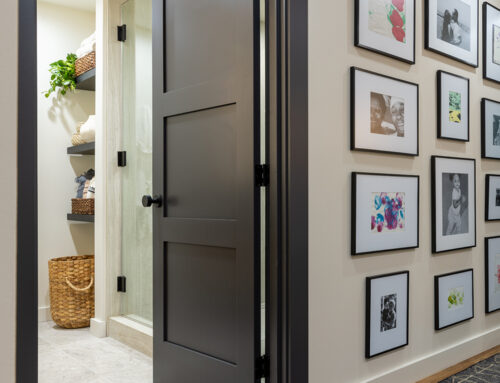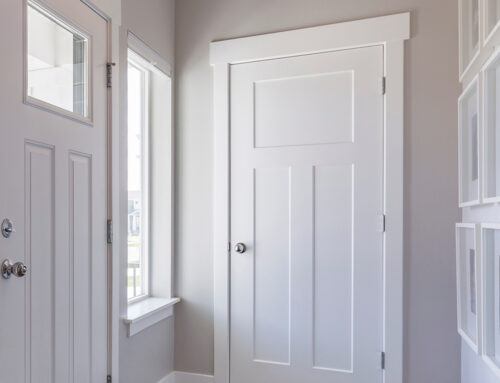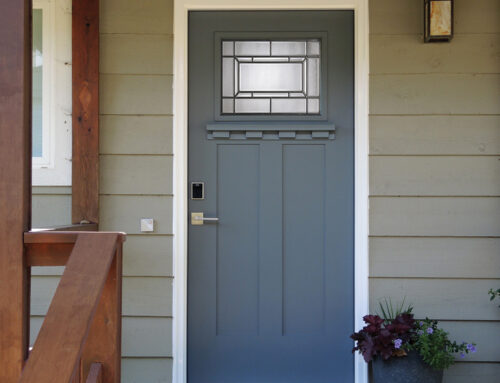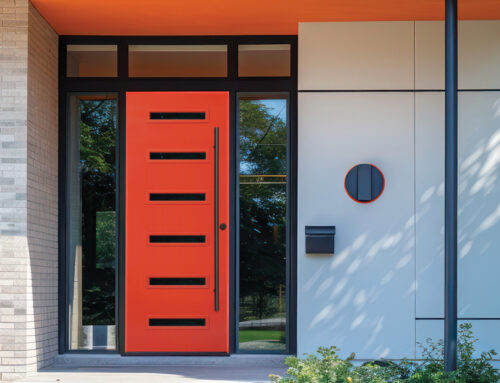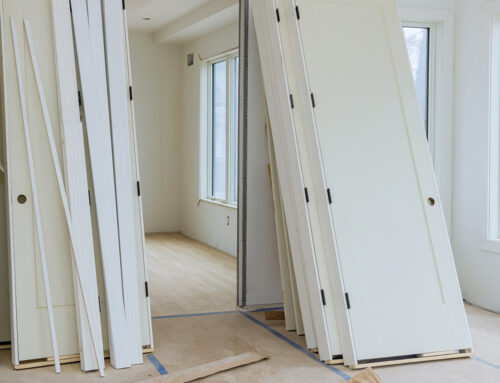Not all doors are created equal, and there are many reasons why your interior and exterior door choices vary to such an extent. Inside interior doors and exterior doors serve different purposes, yet both seemingly serve the same purpose…to open and close off areas of your home. So how are interior doors made? What’s the difference? What are doors made of? If you’ve never looked inside a door, read on, and we’ll explore the main points that make both door types unique.
Major Differences
There are a few main differences in the way that interior and exterior doors are made in terms of materials, insulation, and general appearance:
- How are doors made? Interior doors are often made using one singular material such as wood or fiberboard. This is because they aren’t intended to withstand weather or provide the same security and protection level that exterior doors are intended for.
- Exterior doors are usually thicker and heavier due to the additional reinforcement required. They can be made entirely from fiberglass, steel and/or use a metal frame to provide better structural integrity for outdoor use.
- Exterior doors have insulation built-in, while you’ll often find a hollow space inside a door meant for interior use. Exterior doors use insulation to help keep energy costs down by trapping warm or cool air from escaping your home.
Inside Interior Doors

Interior doors can be constructed in several ways to provide different benefits, including:
Solid Core – These doors feature a wheat, OSB, or particleboard interior core to provide sound absorption and are constructed using a wood frame. These doors can be heavier making them more cumbersome to install, but they provide a good level of sound privacy. These can also be fire-rated using different interior materials.
Hollow Core – Hollow core doors have some structural stability in the stiles and rails, however, the interior void is filled with cardboard webbing. These doors can feel a bit light and inexpensive, but they provide an economic solution for many interior uses such as pantries and closets.
Solid Stile and Rail – These doors use engineered wood to create stiles and rails with exterior panels made from MDF or wood veneer. They are normally much heavier and more expensive than solid core doors but provide an elegant finish that is perfectly suited for homes with a higher level of detailed craftsmanship.
Carved MDF – Carved MDF doors use two panels of MDF with details carved into one side of the panels using a router. These are less expensive than solid core doors but can present a raised panel look for the finish. Because they are often routed using a machine, they can provide a lot of different design options.
Inside Exterior Doors

Exterior doors are available in a variety of different builds, including:
Solid Core Flush – Similar construction to hollow core, but with a particleboard or different wood interior.
Fiberglass – Single material construction, durable, and resistant to warping or shrinking.
Wood-Panel – Durable solid wood construction.
Why Trust Trimlite When Choosing a Door?
Trimlite operates 10 locations across 4 countries and has been manufacturing high-quality doors since 1982. Our products are designed to meet the demands of the future and provide our customers with solutions that align with their needs. Contact us today to find the perfect interior or exterior door for your home.


